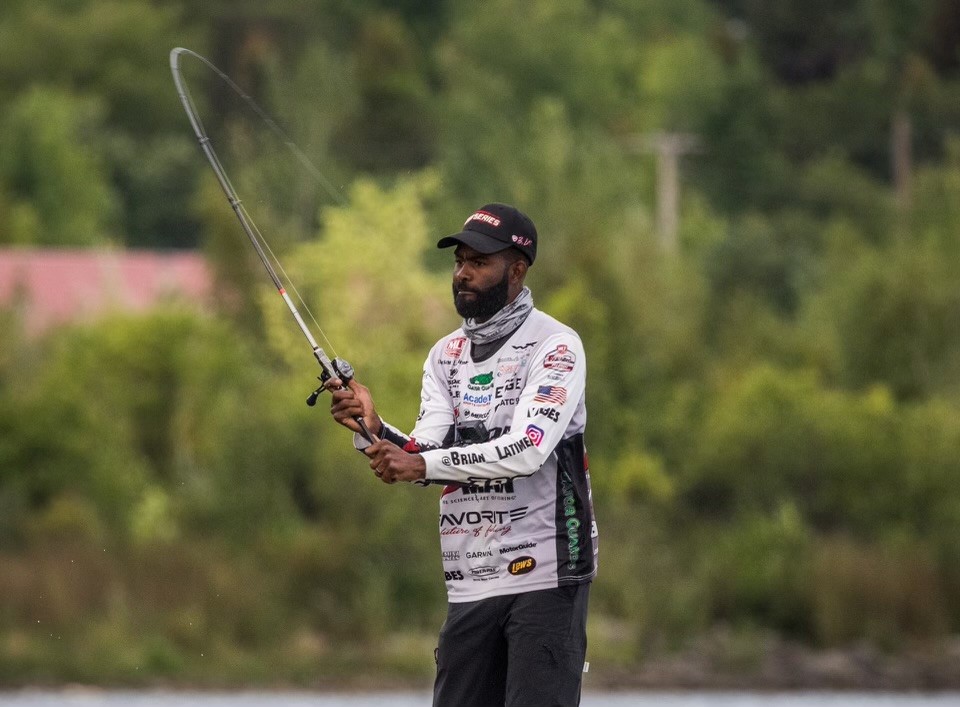Professional Angler's Guide to Line Size
Somebody asked me one day how I know if my line size is too small on different setups and at the time I did not know how to answer that, so I am going to try to answer that here. Because line sizing isn't straight forward, in this article I won't recommend or provide a specific size to use. But, what I will do is share the different indicators to look for to determine if your line size is too small and if you should consider changing what you're using.
You want to choose your line size according to what you are fishing for, and what structure you are fishing - it is less about the bait and more about where you want to put that bait. For example, my spinning rod that I use for saltwater, Bass fishing, and pond fishing I use 15lb test Diamond Braid. I use that line size on almost every spinning rod I use in almost every application I can use it in. I pair that braid line size with different Diamond Fluorocarbon sizes, from 8lb-20lb test depending on the bait and structure I am fishing, or how much I am breaking off.
First thing on my list is the most obvious and most often overlooked when it comes to line size, and that is break offs. Breaking off can mean a few different things, from getting hung up while flipping to breaking off on a hookset. If you ever find yourself going down the bank and casting around the structure because you are worried about breaking off, that is a good first indicator that your line size is too small. You want to be able to put your bait directly into the center of the structure you are fishing and not have to think about breaking off. With the right line size, right bait, and good casting you should feel comfortable putting your bait in and around any structure. Structure is the most important thing to keep in mind for line size.
Another thing that can be a sign of your line size being too small is backlashes. To be very clear, this is a ‘sometimes’ (I stress sometimes) rule because backlashes can be caused by other factors such as user error, the reel not being set correctly, and it doesn't always mean your line size is too small. However, if you are throwing into the wind and every time (literally every time) you end up with a backlash, or you are having to be timid with your casts to not backlash, your line size is probably too small. As an example if you use 10lb test vs 15lb test, that lighter line is going to come off your spool a lot faster than the heavier line and is going to be harder to control.
If you are finding that you have to cross the eyes of the fish to set the hook or you are afraid to cross their eyes, you are probably running too small of line. Especially if you are fishing close quarters like flipping and pitching docks, and you are not very confident in setting the hook because of breaks off, simply up your size. Go from 15lb test to 17lb test, or 17lb to 20lb so you can have the confidence to set the hook. This goes hand in hard with our first tip on adjusting your line size to the type of structure you are fishing. Fishing in certain types of structure and having the confidence that you can get the fish out is more important than downsizing the line for more bites.
The last thing on my list is a little more nuanced but something I find very helpful in my day-to-day fishing, and that is line twists. If you are using a dropshot, T-Rig, or Shakeyhead and you are finding you are getting a lot of line twists, then your line size is probably too small. Smaller diameter lines tend to twist a lot more than bigger diameter lines. Bigger diameter line tends to be stiffer so it will avoid line twists, while the smaller diameter tends to be limper and more nimble so it has a higher chance of twisting on your retrieve. You do not want your line twisting in the water as this hurts your presentation of the bait and can affect the amount of bites you get. Another way is fouling up the bait. What do I mean by that? A lot of times the line will ramp around the hook of your bait, topwaters, and lipless cranks are both bad at this. This happens because a lighter line has more flexibility and when you make a cast that line will back up into the hooks and foul up the bait. It is super aggravating, and the simple fix for that is just upgrading your line size a little bit.
I hope this helps, but as with everything in fishing the best way to learn what line sizes are the best is through experience and fishing a lot.
- Brian Latimer
